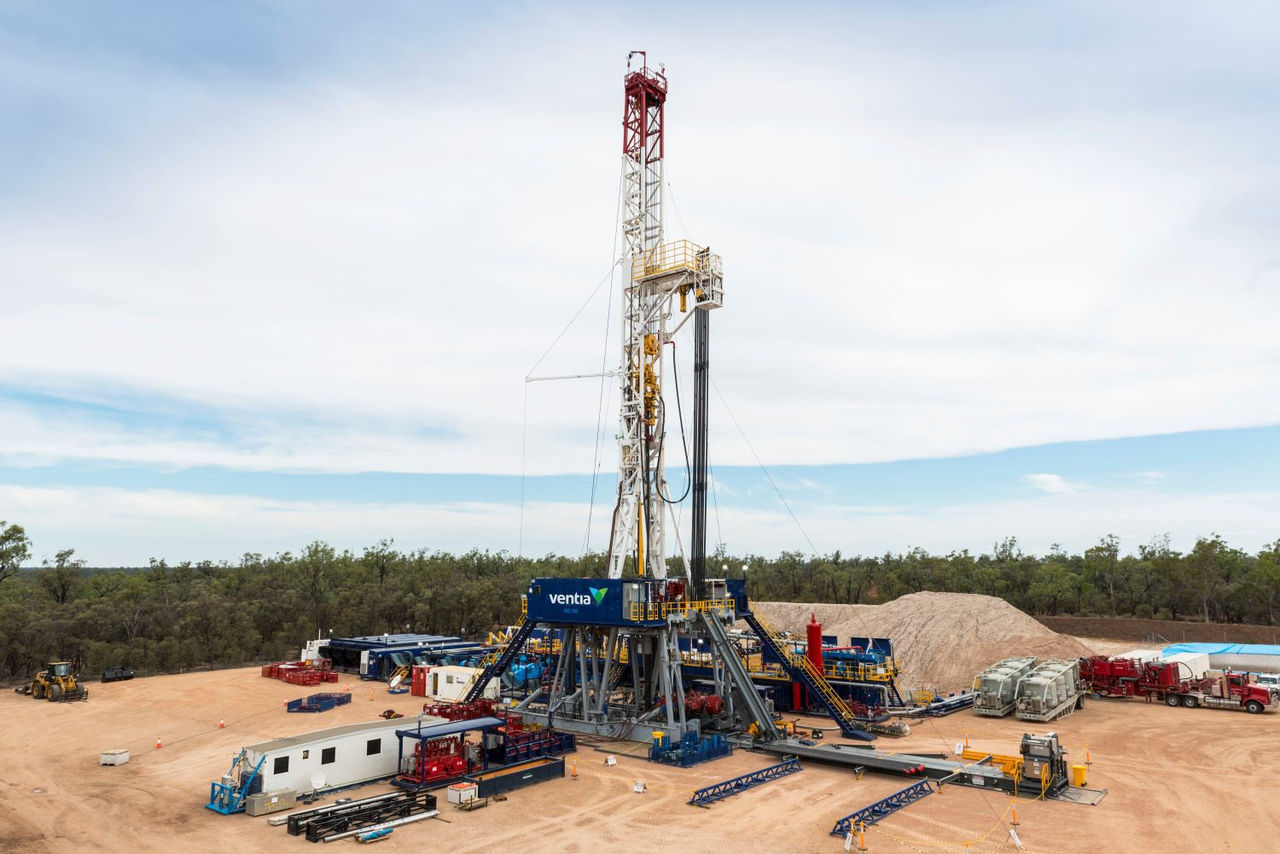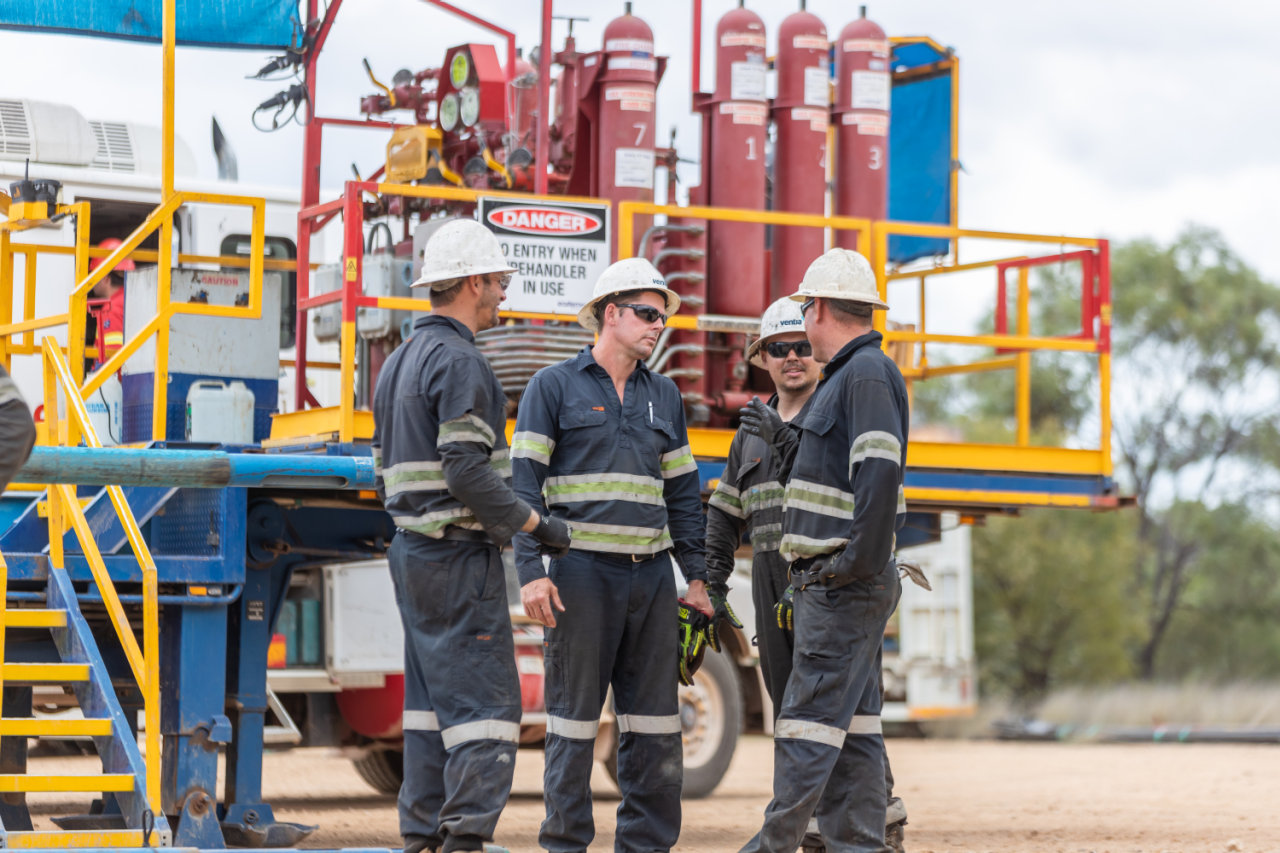In conversation with
Kyle Koziol
As Executive General Manager of one of Australia’s leading providers of onshore drilling and well servicing, Kyle Koziol and the team at Ventia are excited about the opportunities ahead in Australia’s resources industry.
Kyle, and a team of more than 700 employees and 35 rigs, deliver services for many of the world’s biggest resources and energy companies. Along with General Manager Operations Luke Smith, the team has a unique perspective on the Australian energy and mineral markets and how Ventia is setting up to support customers into the future.
Here Kyle and Luke discuss the outlook for the Australia resources industry, as well as some of the ways Ventia is supporting the energy transition across Australia.
Outlook for the energy market in Australia
“On the energy side, gas is going to continue to play a big part in how we transition to a lower emissions future as well as for other applications beyond energy,” Kyle said.
Gas currently represents almost one third of Australia's energy production, reinforcing its importance in meeting demand during the energy transition.
“The Australian Government has laid this out in its future gas strategy where they have stated that new sources of gas supply will be needed to meet demand during the energy transition and that gas must remain affordable for Australian users, including for manufacturing. There are technical and regulatory challenges to bringing new gas supply online, so improvement to the industry’s confidence will encourage investment as we solve for these challenges.”
“As operators seek new gas supplies, specialised service providers and equipment that can access additional supply will be critical. Designing and building this equipment comes with investment so confidence and certainty in the financial returns underpins the business case for any expenditure.
”As well as seeking additional supply, operators are also needing to decarbonise operations to meet social licence expectations, and this is another challenge that service providers will be working with them to solve.”
Meeting the challenge of future demand and their environmental obligations
“Gas operators are looking across the whole supply chain to help them achieve the dual objectives of securing additional supply, whilst also decarbonising,” Luke said
“That means they’re looking for providers who can provide technical insight, equipment that uses less power and generates lower emissions and partners that are experienced enough to deliver processes and performance that reduces the overall costs.
“Our focus in this space has been to better utilise the power generation on our sites to reduce the number of engines that are required for operations which in turn burns less diesel and lowers costs. We have also tested large scale batteries. The economics are more challenging, but we want to make sure that we have the technical capability in place as costs come down which we anticipate will happen over time.
“Above all, changes need to be done safely. We are risk assessing proposed improvements to make sure we have appropriate controls in place and can be sure we don’t make a change that creates risks.
Our team spend a lot of time understanding data, designing and improving systems and processes to enable continued performance improvement because reducing the total cost of operations will always be a focus. For example, we have recently upgraded our operations reporting system which gives us a much better platform to capture data from our operations and then use it to make improvements.
Outlook for Australian minerals
“Similar to the energy side, Australian critical minerals will continue to be in high demand as we progress towards our 2030 and 2050 energy targets. Of course, this is a long-term statement because we also have to set our business up to be profitable through the inevitable cycles that will occur over this longer-term” Kyle said.
“Copper for example is a critical transition mineral due to its conductive properties - it is a key enabler for renewable energy sources such as wind, solar as well as in batteries for storage and electric vehicles and plant. It’s also a key element for digital industries such as data centres and telecommunications."
In fact, the average Australian home contains 90kg of copper, embedded in wiring, pipes, and appliances, highlighting how essential this mineral is to modern life.
“Other minerals like iron ore will continue to be in demand. For on mine site production partners like us, the challenge becomes how we support the efficiency across operations, for things like de-watering in mines that will need to be larger and deeper in size."
“We’ve been a part of this industry for a long time, at Olympic Dam for example where we have been a part of the on-site operations for approaching 20 years. We’re excited about the potential that region has to continue to meet some of this critical demand."
“We have recently grown our rig fleet in this region and are preparing to be a part of the minerals growth that is happening across South Australia and beyond.”
Summary
- Decarbonisation will rely on critical minerals, such as copper due to its conductive properties and its role as a key enabler for renewable energy sources such as wind, solar as well as in batteries for storage and electric vehicles and plant.
- On the energy side, gas is going to continue to play a big part in how we transition to a lower emissions future as well as for other applications beyond energy
- Operators and producers are seeking partners who can provide technical insight, equipment that uses less power and generates lower emissions and partners that are experienced enough to deliver processes and performance that reduces the overall costs.





